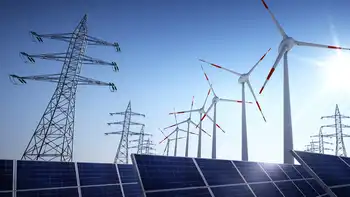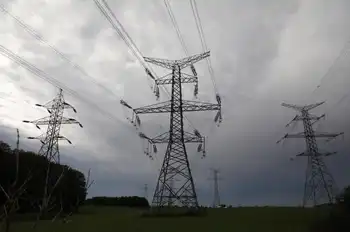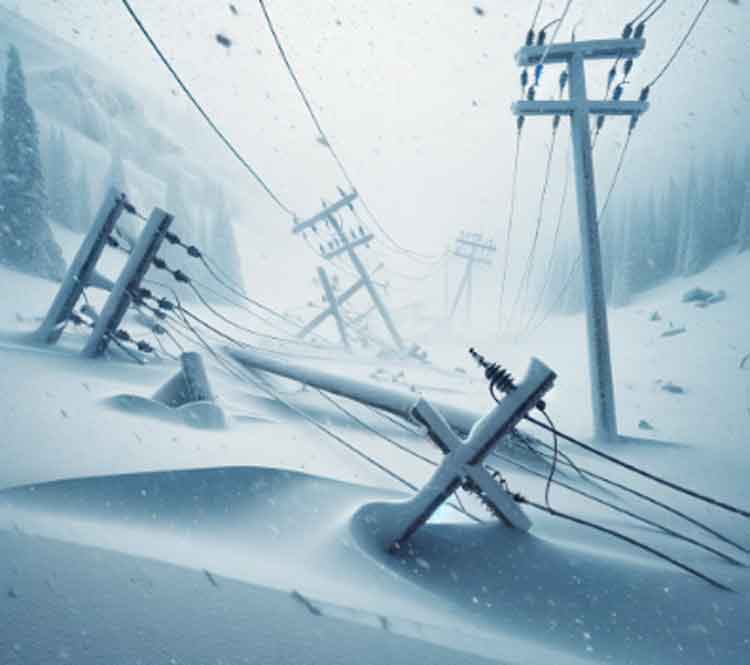Canada Invests Over $960-Million in Renewable Energy and Grid Modernization Projects

NFPA 70e Training - Arc Flash
Our customized live online or in‑person group training can be delivered to your staff at your location.

- Live Online
- 6 hours Instructor-led
- Group Training Available
Smart Renewables and Electrification Pathways Program enables clean energy and grid modernization across Canada, funding wind, solar, hydro, geothermal, tidal, and storage to cut GHG emissions and accelerate electrification toward a net-zero economy.
Key Points
A $964M Canadian program funding clean power and grid upgrades to cut emissions and build net-zero electrified economy.
✅ Funds wind, solar, hydro, geothermal, tidal, and storage projects
✅ Modernizes grids for reliability, digitalization, and resilience
✅ Supports net-zero by 2050 with Indigenous and utility partners
Harnessing Canada's immense clean energy resources requires transformational investments to modernize our electricity grid. The Government of Canada is investing in renewable energy and upgrading the electricity grid, moving toward an electric, connected and clean economy, to make clean, affordable electricity options more accessible in communities across Canada.
The Honourable Seamus O'Regan Jr., Minister of Natural Resources, today launched a $964-million program, alongside a recent federal green electricity contract in Alberta that underscores momentum, to support smart renewable energy and grid modernization projects that will lower emissions by investing in clean energy technologies, like wind, solar, storage, hydro, geothermal and tidal energy across Atlantic Canada.
The Smart Renewables and Electrification Pathways Program (SREPs) supports building Canada's low-emissions energy future and a renewable, electrified economy through projects that focus on non-emitting, cleaner energy technologies, such as storage, and modernizing electricity system operations.
Investing in these technologies reduces greenhouse gas emissions by creating a cleaner, more connected electrical system, supporting progress toward zero-emissions electricity by 2035 goals, while helping Canada reach net-zero emissions by 2050.
Minister O'Regan launched the program during the Canadian Electricity Association's (CEA) virtual regulatory forum on Electricity Regulation & the Four Disruptors – Decarbonization, Decentralization, Digitalization and Democratization, highlighting evolving regulatory approaches as B.C. streamlines clean energy approvals to support deployment nationwide. The launch also coincides with Canadian Environment Week, which celebrates Canada's environmental accomplishments and encourages Canadians to contribute to conserving and protecting the environment.
Through SREPs and other programming, the government is working with provinces and territories, with the Prairie Provinces leading renewable growth in the years ahead, utilities, Indigenous partners and others, including diverse businesses and communities, to deliver these clean and reliable energy initiatives. With Canadian innovation, technology and skilled energy workers, we can provide more communities, households and businesses with an increased supply of clean electricity and a cleaner electrical grid.
To help interested stakeholders find information on SREPs, a new webpage has been launched, which includes a comprehensive guide for eligible projects.
This supports Canada's strengthened climate plan, A Healthy Environment and a Healthy Economy. Canada is advancing projects that support the clean grid of the future and seize opportunities in the global electricity market to boost competitiveness. Collectively with investments from the Fall Economic Statement 2020 and Budget 2021, Canada will achieve our climate change commitments and ensure a healthier environment and more prosperous economy for future generations.











